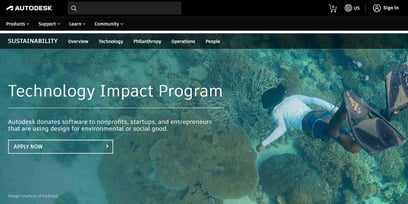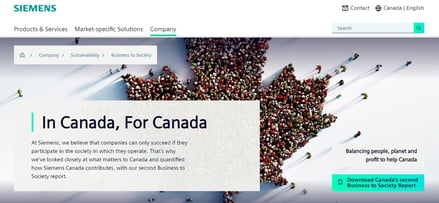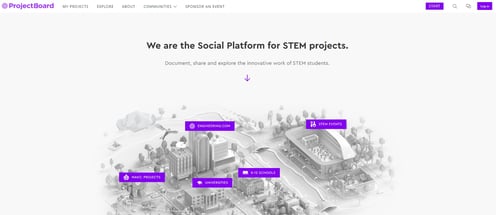 It was once considered bad business for companies to “take a stand” on social or political issues. However, the exact opposite is true today, as many consumers now expect companies and organizations to not only take a stand, but often to take the lead when it comes to public support for social, environmental, and other issues related to public good.
It was once considered bad business for companies to “take a stand” on social or political issues. However, the exact opposite is true today, as many consumers now expect companies and organizations to not only take a stand, but often to take the lead when it comes to public support for social, environmental, and other issues related to public good.
When a company’s marketing activities, campaigns, or partnerships are designed in such a way as to not only generate sales and revenue for the company, but also to achieve some charitable or social goal, we refer to this as cause-driven marketing. Brands are able to associate themselves with social causes that reflect the values and identity of that brand, while simultaneously giving back to a community or a cause via their business operations.
Cause-driven marketing is an increasingly effective way for brands to connect with consumers who share their values and ideals. And, in return, consumers are rewarding companies that are brave enough to take a stand and support causes they are passionate about.
Is Cause-Driven Marketing Effective?
Even if company leaders are passionate about a particular cause, marketing teams are still held accountable for sales and revenue generation. The best cause-driven marketing initiatives are those which benefit both the social cause in question as well as a company’s bottom-line. The good news is that consumers are recognizing and rewarding brands for their charitable activities.
The latest data demonstrates that two-thirds of all consumers (66%), and a whopping 83% of Millennial and Gen Z consumers, believe brands should be involved in some sort of charitable giving activity or movement for social good. The data also demonstrates that consumers not only expect brands to be involved, but they're also rewarding socially-engaged companies with their business. A study conducted in 2019 found that three-quarters of all consumers (75%) said they would start shopping at a company based on that company sharing their values. The same study also found that consumers rank a company’s commitment to environmental sustainability, social responsibility, and giving back to their local community as more important attributes of a business than even the price of their goods! Consumers are taking notice of which companies are involved in social giving, and those which are not.
Research studies on the psychology behind these purchasing decisions have also been conducted. One study from the Kellogg School of Management at Northwestern University found that the products and services of brands which were engaged in social giving were perceived by consumers as actually performing better than the competition, regardless of whether this was true or not. They termed this the “benevolent halo” effect, as consumers believed the company’s authentic commitment to doing good reflected their commitment to quality product/service delivery.
A Note on Authenticity
Just a quick aside on the issue of authenticity. While a majority of consumers are, as we’ve noted, more supportive of companies engaged in social good, this is only true if consumers believe that company to be genuine about their support for the cause. 20% of Millennials, 16% of Gen Xers, and 10% of Boomers say they are skeptical of brands that participate in social causes. It is essential that you ensure your organization is not just virtue signalling with your social marketing but that your organization is genuinely involved and dedicated to whatever your cause is.
Where to Start with Cause-Driven Marketing
At this point, you might be thinking “I have a social cause I’m passionate about, let’s get going!” But before you dive in head first, you’ll want to do some deep introspection and reflection about your organization and the goals you hope to accomplish as you make your foray into cause-driven marketing.
Below are a series of steps you can follow to ensure your cause-driven marketing campaign is well planned, well executed, and has a genuinely positive impact!
- Reaffirm Brand Identity:
Even before determining a cause for your organization, be sure you understand the values of your own brand intimately. You need to know what your own brand stands for, and how you want it to be perceived by your audience before you begin any sort of communication initiatives. Understanding yourself is the first step to understanding how you want to be perceived, so this is a necessary exercise before determining your social cause. - Find Your Cause:
Once you understand your own brand’s vision, values, and beliefs, you can find a cause and/or partner organization that aligns with those values. Try to find a cause or organization that you feel your customers will also care about; for example, engineering and technical firms in the past have partnered with organizations that support education initiatives for disenfranchised youth, women and girls in STEM, environmental sustainability for manufacturing and industry, etc. There are any number of possible social goals your brand can seek to tackle, just try to ensure it’s something that will also resonate with your customers. We’ll look at a few examples of successful initiatives in a moment, so stay tuned! -
Make the Social Cause Your Cause:
While cash donations are helpful, they often require the smallest amount of effort from corporate entities. Consumers might take note if your brand only engages with a social cause through donations, or by providing lip service. Instead, genuinely engage with your social goal through active participation in whatever it is, don’t simply rely on your money to do the talking. -
Be Patient:
Cause-driven marketing takes time, don’t expect your entire brand identity to change and be understood by your audience overnight. The more authentic you are with your engagement in whatever your social cause is, the more your audience will take note of your involvement. Further, making a genuine impact on a social cause takes time – if it didn’t, we would have no social issues to solve! Remember that your company’s involvement is only one piece of a larger puzzle, and that making a noticeable impact on a social issue will take consistent involvement over a long period.
Examples of Success from Engineers
There are numerous examples of cause-driven marketing efforts in the B2C space. For example, the shoe brand Toms became an internationally recognized brand because of its “one for one” business model – for every pair of shoes sold, they delivered a pair of free shoes to a child in need. The California-based outdoor clothing brand, Patagonia, is well known and well worn by environmental activists because of its self-imposed 1% “Earth Tax,” where 1% of the company’s sales are donated to environmental nonprofit organizations around the world. I’ve only named two, but I’m sure as you’re reading this you’ve already thought of other examples.
While examples of charitable B2C activity might be more widely known by the general public, there are many examples of socially minded marketing efforts in the B2B and engineering/technical spaces. Let’s look at a few for inspiration:
Dassault Systèmes’ Sustainable Innovation
Dassault Systèmes emphasizes sustainability in everything that they do. Protection of the environment through technological innovation and development is at the core of the company’s brand identity and business activities, and so they approach every project, product, and service offering with sustainability at the forefront of their minds.
 The company is a leader in the development of 3D Virtual Twin technologies, and through their suite of product offerings they provide customers a means of prototyping everything from entire manufacturing processes to the smallest individual components. By using Virtual Twin technologies, users can prototype just about anything in an entirely virtual environment, eliminating any wasted material and energy that would be required if they were to physically prototype instead.
The company is a leader in the development of 3D Virtual Twin technologies, and through their suite of product offerings they provide customers a means of prototyping everything from entire manufacturing processes to the smallest individual components. By using Virtual Twin technologies, users can prototype just about anything in an entirely virtual environment, eliminating any wasted material and energy that would be required if they were to physically prototype instead.
Dassault emphasizes their commitment to sustainability across all of their marketing materials and digital assets, including their website. As a result of their dedication to environmental sustainability, Dassault has even been recognized by the Dow Jones Sustainability Index, ranking fifth out of 181 companies in the global software sector.
Autodesk's Technology Impact Program
Autodesk is practically a household name in the engineering space. Their software enables hundreds of thousands – if not millions – of workers in the engineering, construction, manufacturing, education, and other sectors every single day. But this industry leader is also known for their charitable giving through their Technology Impact Program.
This program is designed for startups and nonprofits that operate in a social or environmental impact area. Firms that meet these conditions and apply for the program receive free Autodesk software and technology to enable their efforts in 3D design, engineering, visualization, and simulation. Recipients of this software can receive tens of thousands of dollars worth of technology that can then empower them to further their efforts in making a social or environmental impact on the world.
As a global leader in industrial software development, Autodesk is able to leverage what it does best to enable change in the world. They donate software that startups and nonprofits might otherwise be unable to afford, and which will make a huge difference in determining the success or failure of a venture. Autodesk has found an innovative and unique way of giving back to all manner of social causes and have received widespread recognition for their efforts.
Siemens' Business to Society Reporting
While Autodesk might be a household name in engineering circles, Siemens is a household name across most of the world. Headquartered in Germany, Siemens is the largest industrial manufacturing company in Europe, employs more than 290,000 people around the world, and reports global annual revenues in excess of 60 billion USD. It’s not an exaggeration to call Siemens a global giant.

With so many business units and activities being conducted around the globe, Siemens made it a goal of theirs to track the social, environmental, and economic contributions of each of their national business units. Out of this, the annual Business to Society report was born. Using the UN Agenda for Sustainable Development plan as a framework, each national business unit tracks, documents, and publishes for the public a report on their contributions to achieving these goals each year. Specifically, each report looks at six pillars of sustainable development: contributions to the national economy, development of human capital through training and education, technological and scientific innovation, protection of the environment, quality of life improvements, and societal development or transformation.
Being such a large organization, Siemens is involved in innumerable social and charitable activities each year, so they were forced to develop a methodology to quantitatively measure their total impact. By publishing their annual findings for the public to see, they are maintaining a high degree of transparency – which the public appreciates – while also setting the bar each year for improvement. As a result of this robust tracking and reporting system, Siemens has been recognized by industry publications and award organizations for their commitment to social good.
Engineering.com's ProjectBoard
“And what about engineering.com,” I hear you asking. Of course, we do have our own initiative designed to foster social progress. In 2018 we publicly announced the development of our new web-based project management platform, ProjectBoard. At that time, the platform was only meant to be a virtual space for members of the STEM community to gather, share ideas, and solve problems with one another. However, following the onset of the COVID-19 pandemic, educators, organizers, and companies across the STEM community began reaching out to us, asking to use the platform to host their event or maker faire. That’s when we realized we could do more for STEM education using this platform.
 Today, ProjectBoard is being used by a number of world-leading universities and colleges (including York University, Rice University, and the University of Sheffield), private corporations, and other event- or project-based organizations related to STEM. Engineering.com has partnered with organizations like the International Science and Engineering Fair (ISEF), the National Association of Academies of Science (NAAS) and the American Junior Academy of Science (AJAS), as well as Youth Science Canada (YSC), so that even in the midst of gathering restrictions, students can still access the broader knowledge and expertise that only a community of engineers can afford them.
Today, ProjectBoard is being used by a number of world-leading universities and colleges (including York University, Rice University, and the University of Sheffield), private corporations, and other event- or project-based organizations related to STEM. Engineering.com has partnered with organizations like the International Science and Engineering Fair (ISEF), the National Association of Academies of Science (NAAS) and the American Junior Academy of Science (AJAS), as well as Youth Science Canada (YSC), so that even in the midst of gathering restrictions, students can still access the broader knowledge and expertise that only a community of engineers can afford them.
In addition to our ProjectBoard partnerships, we have gone out of our way to make support for STEM education a priority at the highest levels of our company. Engineering.com’s CEO, Frank Baldesarra, published an article in 2020 outlining all the ways we are committed to supporting the next generation of engineers. We’re giving back to our industry and profession through initiatives like ProjectBoard, hoping that young, budding engineers can find inspiration and community through the use of the platform, and that this will further their interest in the field as they develop and progress in their careers.
Find Your Cause
Charitable giving and social projects are becoming more of a business necessity with each passing year, as consumers come to expect more from the companies that provide their products and services. If your organization doesn’t already have a cause it publicly supports and works towards, then you should be actively looking for one! Your customers will appreciate your efforts, and you will attract like-minded partners who can increase the impact around the desired change. Not to mention the effect on future employee recruitment, finding those that fit your values and culture.
If you have anything you’d like to add to the content of this blog, like sharing your experience with cause-driven marketing, please feel free to leave a comment below!





